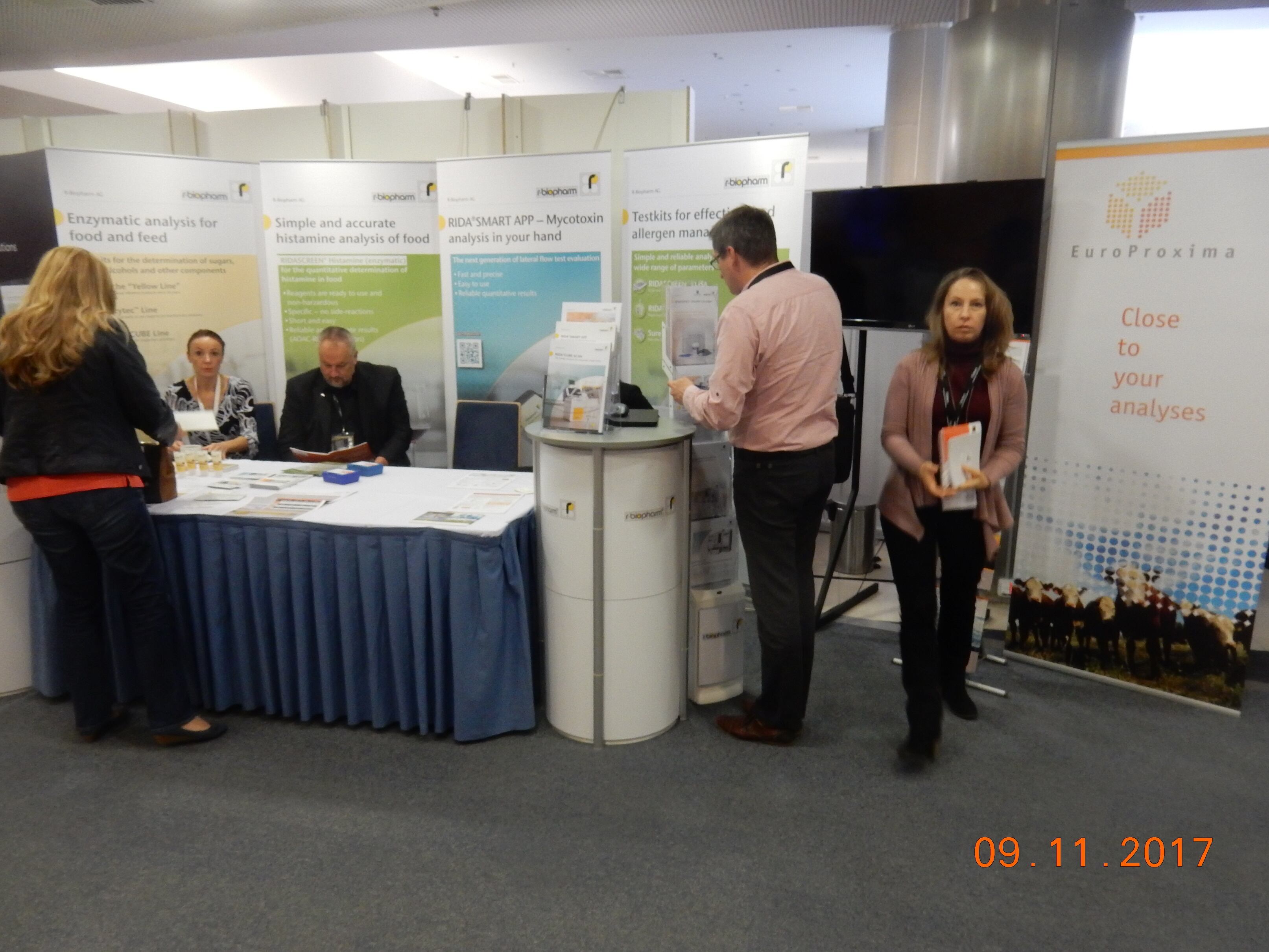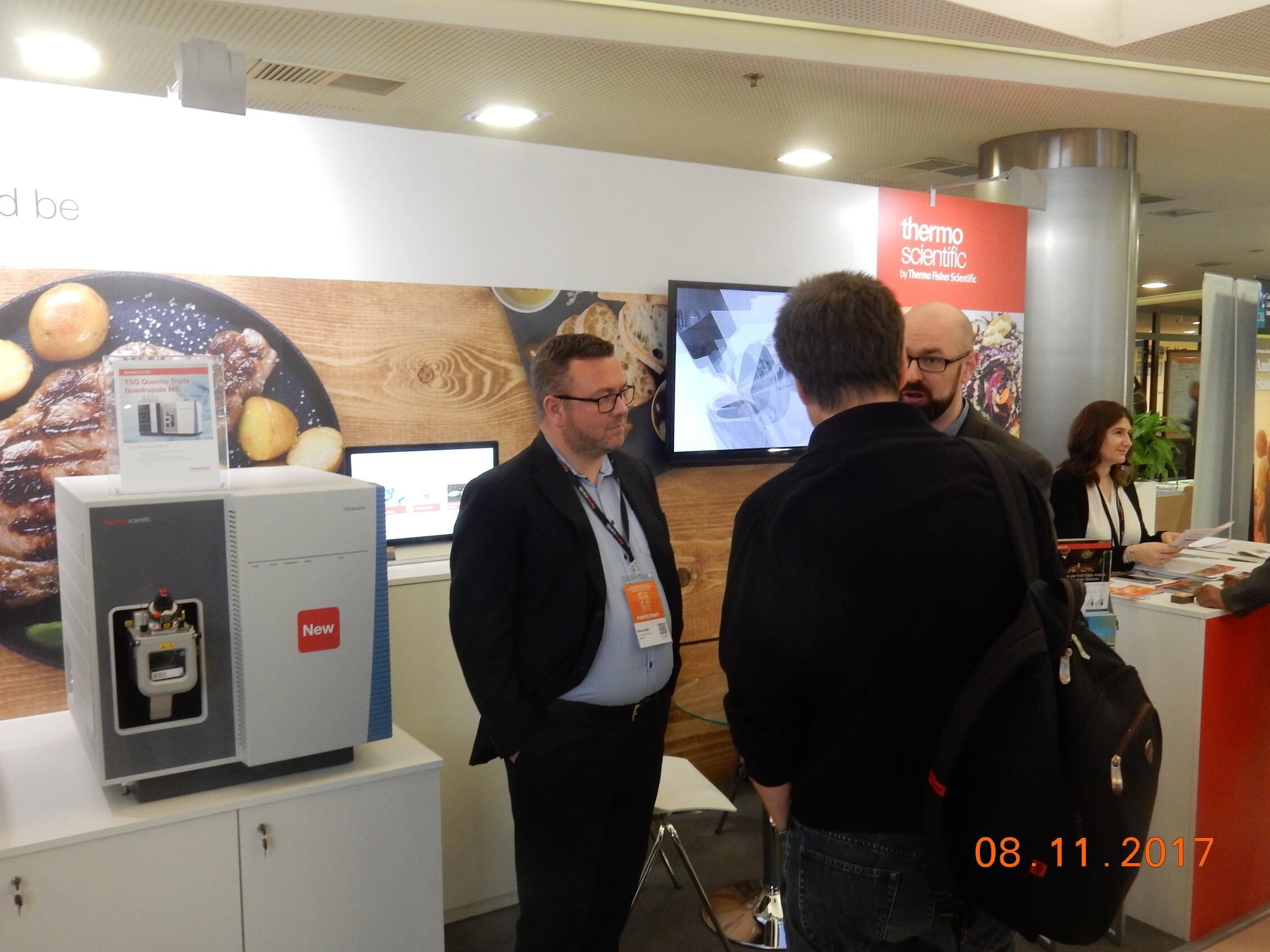FoodSmartphone and PhasmaFOOD presented at the RAFA Smart Lab in Prague.
PhasmaFOOD will design a multi-target food sensitive mini-portable system for on-the-spot quality sensing and shelf life prediction. The project runs until the end of 2019.
Yannick Weesepoel of RIKILT said target areas are food spoilage, adulteration and aflatoxins.
Project goals
The hardware design will integrate three sensors in the miniaturised smart sensor node: a MEMS-based near IR spectrometer (950-1900 nm), a UV-VIS spectrometer (450-900 nm) and a micro-camera. Three light sources will support the sensing functionality (UV-LED, white LED and a miniaturised IR emitter).

Data will be communicated to a smartphone device where spectroscopy analysis will take place with a cloud-base application connected to a reference database. Detection algorithms will be deployed in the cloud and smartphone application.
FoodSmartphone will develop smartphone-based (bio)analytical sensing and diagnostic tools for on-site rapid pre-screening of quality and safety and wireless data transfer to relevant stakeholders.
Michel Nielen of RIKILT said current testing involves millions of samples being taken at multiple sites and (non-) compliance of the few suspect ones needing to be confirmed by validated instrumental methods. Despite this, there are still food incidents and fraud issues.
He predicted within the next 10 years there will be a limited number of high-end well equipped centers while personalised on-site testing will see a great improvement.
The consortium includes (bio)analytical chemists, biologists, physicists, micro-engineers, mathematicians and food chemists and runs until the end of 2020.
US FDA and USDA areas of interest
Katherine Carlos of the US FDA presented an LC-MS/MS method for sulphite determination.
FDA requires sulphites are labelled as an ingredient if the product contains greater than 10mg/kg (ppm).
The current method, AOAC Optimized Monier-Williams (OMW), is time-consuming and has a detection limit at the regulatory labelling threshold.
It also produces false positive results with vegetables from the garlic and cabbage family due to extraction conditions.
The developed LC-MS/MS method converts free and reversibly bound sulphite to the formaldehyde adduct, hydroxymethylsulfonate, which can be separated from matrix constituents using a HILIC analytical column and detected with tandem mass spectrometry.
Carlos said it reduces the false positives and is a faster, more sensitive and more selective way of determining sulphites in food and beverages.
Gary Gamble, of USDA-ARS, presented an optical based pathogen detection system that is under development.
Gamble said pathogen monitoring is largely based on procedures involving recovery, enrichment and plating of samples on selective media. Microbiological tests can be followed by biochemical, serological or genetic confirmation of species and serotypes.
A Hyperspectral microscopy imaging (HMI) methodology where individual cells are identified based upon spectral signatures with shape features can reduce the incubation time for bacteria cultures.
A surface plasmon resonance imaging (SPRi) technique has also been developed to detect foodborne Salmonella cells on a sensor surface modified with anti-Salmonella antibody spots.
Gamble said it shows promise for multiplex screening of pathogens as the sensor chip can be modified with spots consisting of antibodies targeted at different species or serotypes.
Migration and isotope analysis
Leco said fast and sensitive acquisition of mass spectra makes GC-TOF MS the technique of choice in non-targeted examination of non-intentionally added substances (NIAS) in food samples.
Polymers-based material properties such as flexibility can be altered with incorporation of additives like lubricants, plasticisers and colouring agents.

Leco said they can have unknown by-products that form during production or can transform or degrade over time with extraction and leaching becoming a consumer concern.
Head space solid phase microextraction sampling followed by gas chromatography (SPME-GC-MS) using a time of flight (TOF) mass analyser was used to search for off-flavour compounds in chocolate advent calendars.
Jaromir Hradecky of UCT in Prague used low and high resolution TOF MS on 14 samples of advent chocolate calendars from Czech Republic, Germany, Netherlands and Poland.
Styrene was detected in one of the chocolate samples. HR-TOF MS identified off-flavour compounds in chocolate. Acrylates were identified in green painted parts of the wholesale cardboard box.
Thermo Fisher Scientific highlighted the use of isotope fingerprints in authenticity and food integrity such as ensuring coffee comes from the country it claims to by looking at isotope ratios of oxygen and hydrogen and if a certain vegetable organically grown by looking at nitrogen.
Simon Kelly from IAEA said stable isotope analysis gives another level of information but is not a ‘golden bullet’ for authenticity control and fraud prevention.
He said methods require a database of authentic samples to do a comparison and such samples must reflect variability such as geographic origin, seasonal changes and differences in raw materials.
Isotope Ratio Mass Spectrometry (IRMS) is can help identify origin of food and beverage products.
Targets are the stable isotopes of carbon, nitrogen, sulphur, oxygen and hydrogen.
IRMS coupled with GC, LC, elemental analysers and other sample preparation technologies can uncover stable isotope fingerprints in a food sample.
Kelly added verifying geographic origin of food was important to reduce barriers to trade, PDO/PGI legislation and consumer awareness and confidence.
